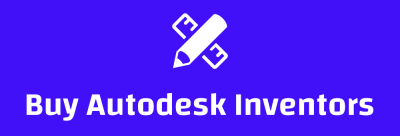What is Software Application Enhancement?
Software application developers and programmers work hard to create the applications we use every day.
Developers also spend a lot of time focusing on engineering, integrating, and deploying this software alongside their operational counterparts, often in newly created DevOps teams designed to combine the work goals of both parties.
But not all apps are simply created and then removed or deleted.
Life cycle management
Many applications (and larger database analysis systems) will go through what the industry likes to call the Software Application Development Life Cycle (SDLC) when first created.
The SDLC describes the process of planning, analysis, design, construction, testing, and implementation.
But the life cycle has other stages of maintenance, improvement and progression.
Vendors are now emerging who describe themselves specifically as specialists in application enhancement and maintenance.
Today, user demands are changing so rapidly that it makes sense for organizations to look for ways to extend functionality rather than go through cycles of removal and replacement, which are, ultimately, always costly. .
How is the improvement going?
Some application enhancements will occur internally within the IT department.
These are changes that need to be made as a result of external platform changes impacting the entire industry, new device form factors coming to market or perhaps as a result of the evolution of data and application governance and compliance.
The first step in improving software is fixing bugs, glitches, errors, and anomalies in applications. This is also the area where we can design applications to take advantage of better scanning, storage, or processing speeds if they become available…and it’s also the point where we can design for better cross-platform compatibility.
User-driven external enhancement
Another application enhancement occurs as a result of external user requests generated outside of the IT department.
These enhancements aren’t always so easy to integrate into the application stack, i.e. sometimes the user base will request features that aren’t easy to code, that don’t integrate well into the current application execution engine and, quite simply, cause a disproportionate load on system resources.
For example, if a cloud-based application was designed for deep back-end data analysis to make it really smart and produce new sophisticated artificial intelligence (AI) functions, it probably wasn’t. scaled and provisioned for heavy entry. /output data workloads; as you would expect in an inherently transactional application.
For lack of a reasonably simple analogy… you can’t just drive a big (data analytics) truck designed for unfamiliar muddy terrain fast down a transactional highway unless you go back to the shop and start over.
A form of formality
User enhancement requests can be difficult, but they can also be easy to deal with.
When business users have identified a formal business policy change within an organization and take care to document the changes they require, life becomes easier.
When business users submit their application change requests through formalized “enhancement process” templates (many vendors call them that), life, at least in theory, also becomes easier.
In the modern age of login cloud apps, we know software is changing. Software development professionals now formally capitalize the letters Continuous Delivery (CD) and Continuous Integration (CI) because they see that the software delivery pipeline is still open and the flow is fairly constant.
Gone are the days of commercial software on CD-ROM in a box (COTS) where updates and new releases appeared only once a year, or even less often.
Architectural Challenges
So improving apps is rarely easy, usually not simple, often convoluted and complex, usually always prone to areas of disagreement, and usually costly in terms of developer coding time and downtime if an app needs to Sign out.
Companies looking to improve their existing set of software applications will need to perform an accurate assessment of their IT installed base and, also, perform a skills audit of their IT department to determine the degree of improvement that will need to be carried out by specialists. external. .
It’s important to remember that software changes over time and IT staff will leave their jobs all the time. Ensuring that solid documentation exists is a proven way to keep an organization’s code stock properly categorized and ready for its next change.
The software you use today is about to change tomorrow, so be prepared for that inevitable eventuality and start thinking now about future improvements.


Comments are closed.